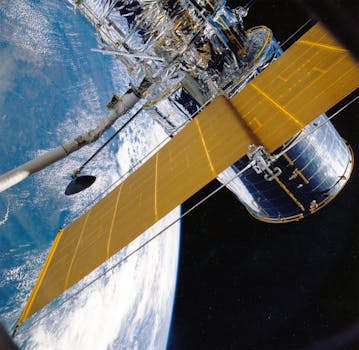
GEO Satellites: Understanding the Technology and Applications of Geostationary Orbit Satellites
GEO satellites, or geostationary orbit satellites, are a type of satellite that orbits the Earth at an altitude of approximately 36,000 kilometers, which is the same distance as the Earth’s equatorial radius. This unique orbit allows GEO satellites to remain stationary relative to a fixed point on the Earth’s surface, making them ideal for a wide range of applications, including telecommunications, earth observation, and weather forecasting.
GEO satellites have been in use for several decades, with the first geostationary satellite, Syncom 2, launched in 1963. Since then, the technology has evolved significantly, with modern GEO satellites capable of providing high-speed internet connectivity, broadcasting television channels, and monitoring the Earth’s climate and weather patterns. In this article, we will explore the technology and applications of GEO satellites in more detail.
The Technology Behind GEO Satellites
GEO satellites are designed to operate in the geostationary orbit, which is a circular orbit around the Earth at an altitude of approximately 36,000 kilometers. To achieve this orbit, a satellite must be launched into space with a velocity of approximately 11.2 kilometers per second. Once in orbit, the satellite’s velocity is slowed down by the Earth’s gravity, causing it to fall towards the Earth. However, due to the satellite’s high altitude, the Earth’s atmosphere is too thin to cause significant drag, allowing the satellite to maintain its orbit.
GEO satellites are typically equipped with a range of instruments and antennas, including transponders, which are used to receive and transmit signals. The satellites are also equipped with solar panels, which provide power, and a propulsion system, which is used to maintain the satellite’s position and altitude. Modern GEO satellites are highly advanced, with some satellites capable of providing speeds of up to 100 Gbps.
Applications of GEO Satellites
GEO satellites have a wide range of applications, including telecommunications, earth observation, and weather forecasting. One of the most significant applications of GEO satellites is in the provision of telecommunications services, including telephone, internet, and television broadcasting. GEO satellites are able to provide coverage to a wide area, making them ideal for providing services to remote or underserved communities.
GEO satellites are also used for earth observation, providing valuable data on the Earth’s climate, weather patterns, and natural resources. The satellites are equipped with a range of instruments, including cameras, spectrometers, and radar, which are used to collect data on the Earth’s surface and atmosphere. This data is used for a wide range of applications, including weather forecasting, climate modeling, and natural resource management.
Future Developments in GEO Satellites
The technology behind GEO satellites is constantly evolving, with new developments and innovations being made regularly. One of the most significant advancements in recent years has been the development of high-throughput satellites (HTS), which are capable of providing speeds of up to 100 Gbps. HTS satellites use a range of technologies, including spot beams and frequency reuse, to provide high-speed connectivity to a wide area.
Another area of development is in the use of GEO satellites for earth observation. New instruments and technologies, such as hyperspectral imaging and synthetic aperture radar, are being developed to provide higher resolution and more accurate data on the Earth’s surface and atmosphere. These advancements are expected to have a significant impact on a wide range of applications, including weather forecasting, climate modeling, and natural resource management.
Conclusion
In conclusion, GEO satellites are a crucial part of modern telecommunications and earth observation systems, providing a wide range of services and applications. The technology behind GEO satellites is constantly evolving, with new developments and innovations being made regularly. As the demand for telecommunications and earth observation services continues to grow, the importance of GEO satellites will only continue to increase, making them a vital part of our modern world.




